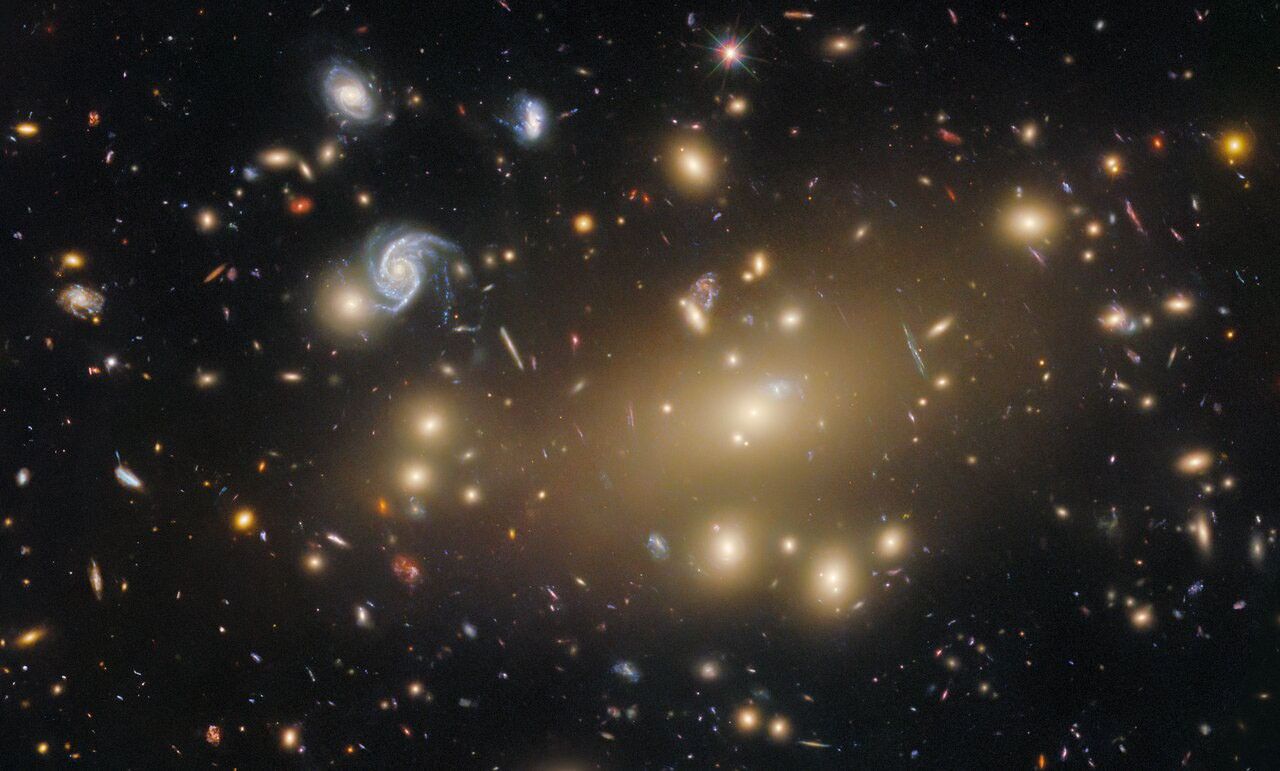RELEASE : 03-264
Panel Identifies Three Options For Space Telescope Transition
An independent panel of astronomers identified three options for NASA to consider for planning the transition from the Hubble Space Telescope (HST) to the James Webb Space Telescope (JWST) at the start of the next decade.
The panel, chaired by Prof. John Bahcall, Institute for Advanced Study, Princeton, N.J., chartered by NASA earlier this year, submitted their report to the agency this week.
NASA's current plans are to extend the life of the HST to 2010 with one Space Shuttle servicing mission (SM 4) in 2005 or 2006. The plan is tentative pending the agency's return to flight process and the availability of Shuttle missions. NASA plans to eventually remove the HST from orbit and safely bring it down into the Pacific Ocean.
"NASA is deeply appreciative to Prof. Bahcall and the panel for getting this thoughtful report to us ahead of schedule," said Dr. Ed Weiler, NASA's Associate Administrator for Space Science. "We have a big job to do to study the panel's findings and consider our options, and we will respond as soon as we have time to evaluate their report," Weiler said.
The three options presented by the HST-JWST Transition Plan Review Panel, listed in order of priority, are:
"1. Two additional Shuttle servicing missions, SM4 in about 2005 and SM5 in about 2010, in order to maximize the scientific productivity of the Hubble Space Telescope. The extended HST science program resulting from SM5 would only occur if the HST science was successful in a peer-reviewed competition with other new space astrophysics proposals."
"2. One Shuttle servicing mission, SM4, before the end of 2006, which would include replacement of HST gyros and installing improved instruments. In this scenario, the HST could be de-orbited, after science operations are no longer possible, by a propulsion device installed on the HST during SM4 or by an autonomous robotic system."
"3. If no Shuttle servicing missions are available, a robotic mission to install a propulsion module to bring the HST down in a controlled descent when science is no longer possible."
In addition, the panel described various ways to ensure maximum science return from the HST if none, one or two Shuttle servicing missions are available.
"A lot of astronomers and NASA officials were astonished, when we said our report was ready just one week after our public meeting. This was possible because we reached unanimous agreement on our conclusions very quickly; remarkable when you consider there were six independent-minded scientists on the panel. Our secret is we did our homework very thoroughly. Many people helped to educate us," Bahcall said.
For information about NASA and space science on the Internet, visit:
The HST-JWST Transition Panel report is available on the Internet at:
http://www.nasa.gov/audience/formedia/features/MP_Public_Reports.html
Information about the panel, including membership and charter, is available at:
http://hst-jwst-transition.hq.nasa.gov/hst-jwst/
For information about the Hubble Space Telescope on the Internet, visit:
For information about the James Webb Space Telescope on the Internet, visit:
- end -
text-only version of this release
NASA press releases and other information are available automatically by sending a blank e-mail message to hqnews-subscribe@mediaservices.nasa.gov. To unsubscribe from this mailing list, send a blank e-mail message to hqnews-unsubscribe@mediaservices.nasa.gov.



































